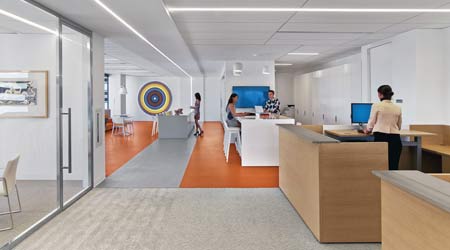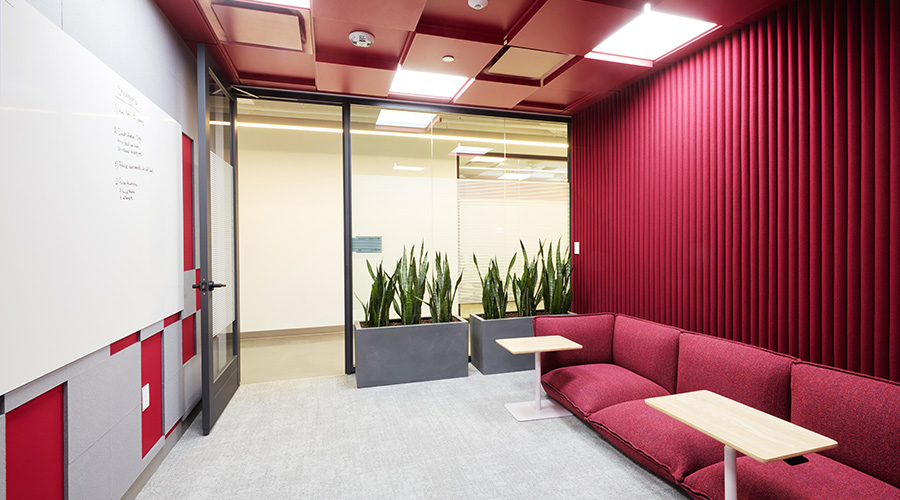 Executive space should be planned in the context of other changes in office design, like a reduction in personal space to allow for more common areas. For example, many offices have central gathering spots like this break area and lunchroom at Pritzker Group headquarters.Photo by Eric Laignel/courtesy of HOK
Executive space should be planned in the context of other changes in office design, like a reduction in personal space to allow for more common areas. For example, many offices have central gathering spots like this break area and lunchroom at Pritzker Group headquarters.Photo by Eric Laignel/courtesy of HOKC-Suites Are Becoming More Flexible, Functional Spaces For Executives
"Touchstone environments" and offices that support "multimodes of work" are the new order of the day for executive suites.
Rather than reflecting the notion of entitlement, C-suites are being fashioned as functional spaces for executives. One example is a pharmaceutical company that wanted to “create a different quality of space that could support the next generation of leaders,” says Polucci. Much of the executive space was transformed into areas for training and social enclaves where people could interact with members of the C-suite.
Bonnin cites two examples of large floor plates in multitenant buildings, in which all the companies’ functions were integrated, with no walls or doors between departments. “This was a conscious decision not to be walled off from the rest of the people in the organization,” he said. In such an environment, when there is a need for senior executives to have confidential conversations, they can use nearby enclosed conference rooms. Even in areas where an administrative assistant serves as the first point of contact, executives are not sequestered behind physical barriers, but there might be a transparent security layer, he says.
One example of a recent traditional design, done for Wilson Sporting Goods in Chicago, had a corner office for the chief executive with a little more space, says Gannon. But within that environment were “multimodes of work,” he says. “It’s about having a desk and meeting space and other functions of choice in that environment.” While Wilson reduced its footprint, the company also enhanced the functionality of the space.
Another important trend in the C-suite or executive spaces is the use of the sit-stand desk. Many custom solutions are available, and the price of these desks has come down, so that they are being used more universally across the entire office population, Gannon says.
In some companies, executives are creating a “touchstone environment,” Gannon says. This is a flexible space that can accommodate people who might normally work in dedicated spaces but have come together for a specific purpose. Both executives with their own offices as well as those who sit in the open plan are requesting these special-project areas that allow pin-ups, for example, and furniture that facilitates collaboration. One example is Hyatt in Chicago, which has enclosed spaces for executives along with adjacent areas for project teams. “They also have a dedicated conference space shared among executives,” Gannon says, “and a lot of mixed modes within executive suites, including lounge areas.”
Sometimes an organization has to take international cultural norms into consideration — when a lack of luxury for executives could reflect badly on a company. For example, in a multicultural corporation like Beam Santori, a subsidiary of a larger Japanese firm, “it is culturally significant to have space dedicated for senior leadership,” says Gannon. In that case the organization maintained a space dedicated to senior leadership in the United States, even though most of the space is open.
Maryellen Lo Bosco is a freelance writer who covers facility management and technology. She is a contributing editor for Building Operating Management.
Email comments and questions to edward.sullivan@tradepress.com.
Related Topics:














